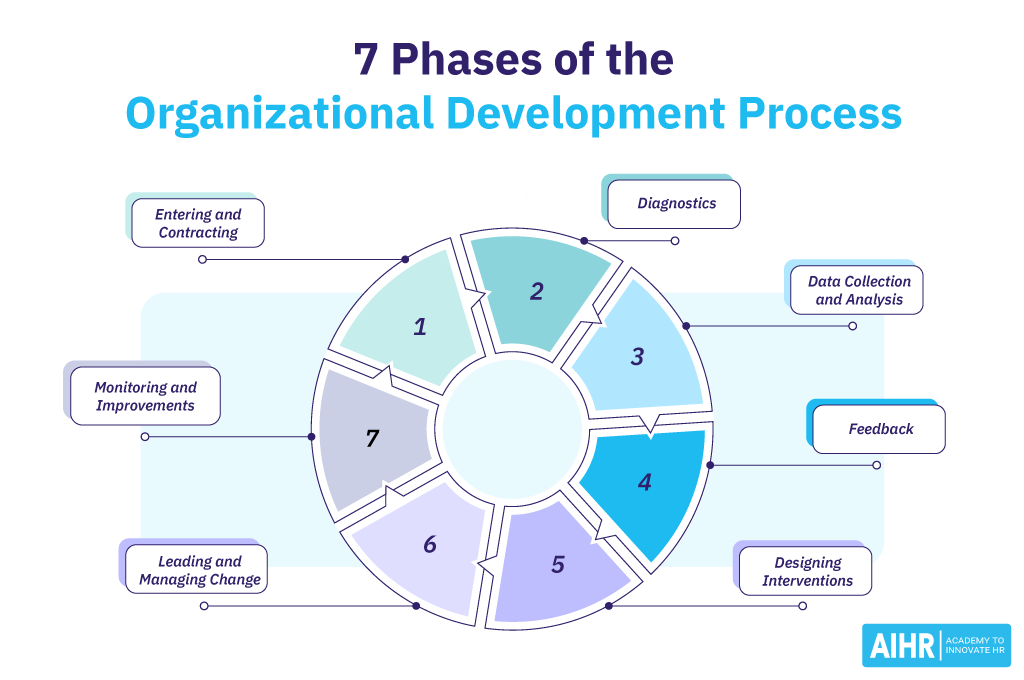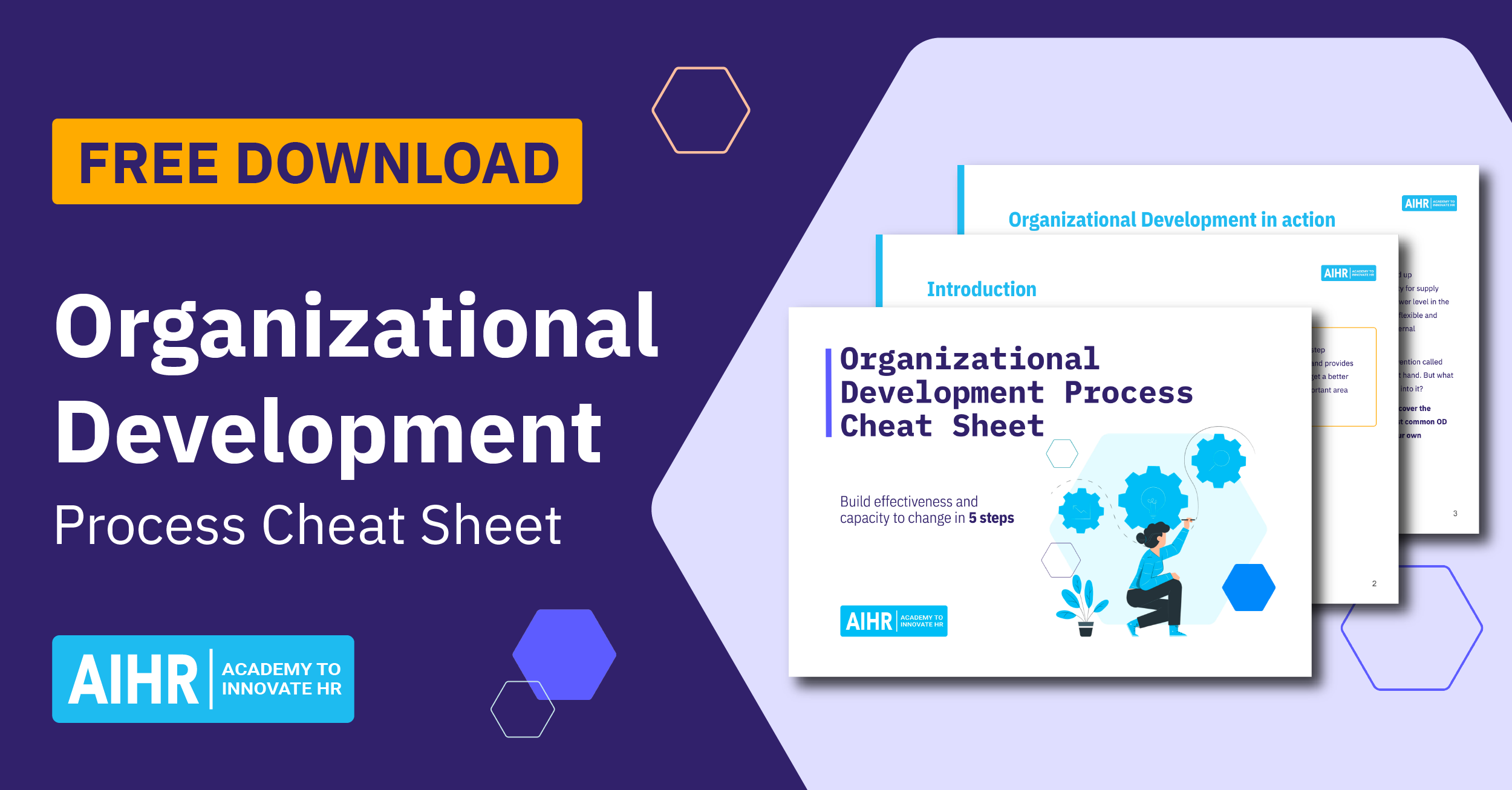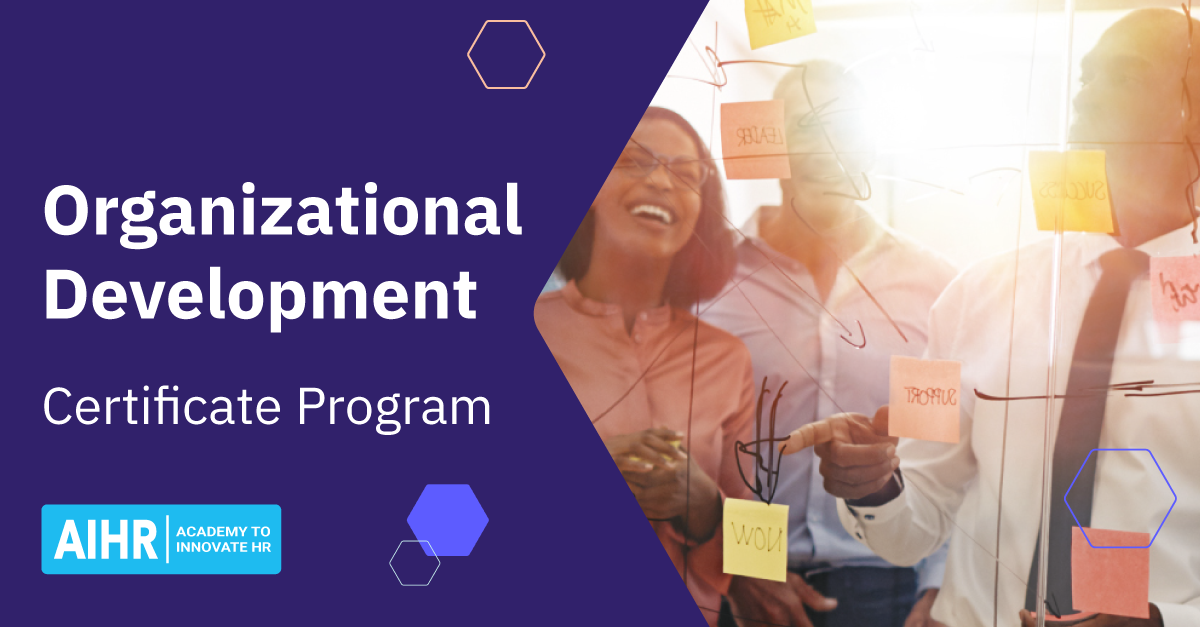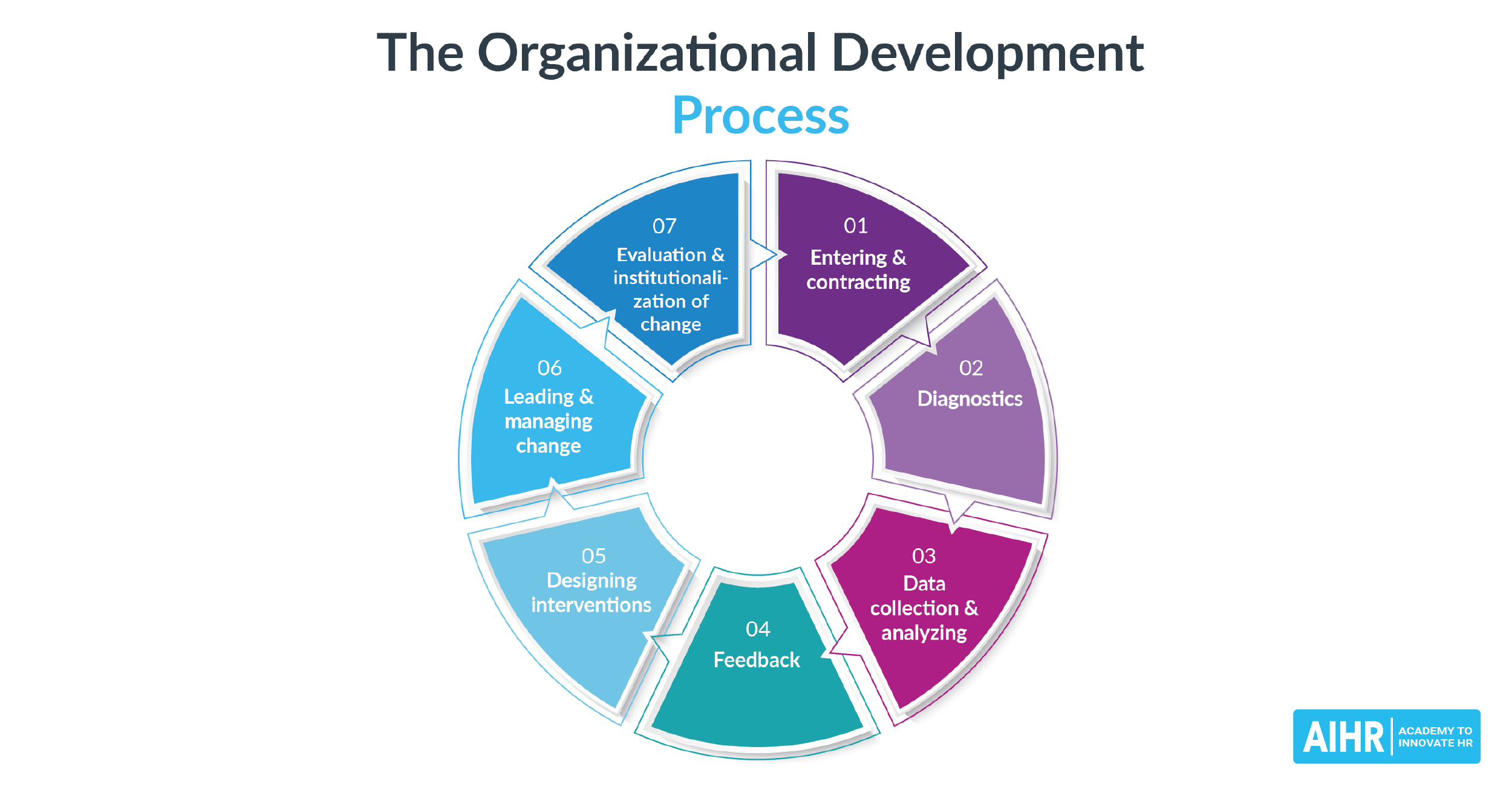Organizational Development (OD) Project
What is an organizational development (OD) project?
Organizational development (OD) is an evidence-based and science-based approach to enable the organization to have the right structures, processes, and resources available for delivering on the business strategy and operational requirements.
An OD project is structured according to a systemic process of engagement that usually involves a number of steps, such as contracting, diagnosing, designing, intervening, measuring, and improving.
Overall, organizational development is a vast interdisciplinary field involving many subjects, including HRM. Here is a brief overview of how OD works in practice, including several examples of OD projects.
Elements of organizational development
As explained, organizational development is a vast interdisciplinary field with an equally vast approach and scope. Overall, this field is based on three main elements:
Science and evidence-based diagnostic approaches
OD is based on scientific research and the development of evidence-based models, frameworks, and tools that follow a rigorous scientific development process. OD practitioners use scientific findings as input and test assumptions by creating controlled and structured processes. They ensure that the outcomes of their tests reflect the interventions’ intentions while remaining ethical and responsible in their approach to improving organizational effectiveness.
Efficiency and change
Organizational development has 3 main goals: improving the organization’s effectiveness (doing the right things), efficiency (doing the right things in the right way), and capacity to change (being able to do the right things in the future).
Organizational Development practitioners will work across the business value chain, and their focus is usually aligned with the bigger strategic objectives of the business, such as customer satisfaction, financial performance, and employee engagement and productivity.
Improving the organization’s capacity to change entails optimizing its agility to enable it to adapt better to internal and external changes, with long-term sustainability and viability being a key objective.
Development, improvement and reinforcement
Improving efficiency and capacity to change necessitates developing better strategies, structures, and processes. It also requires the continuous improvement and reinforcement of these strategies and structures and can span across a variety of topics such as people, processes, and technologies.
The 7 phases of an OD project
Organizational development projects follow a seven-step process, as detailed below:

1. Entering and contracting
Entering and contracting entails consulting OD practitioners and scoping out a problem. This can occur when an organizational objective has been identified, an existing problem or inefficiency has been discovered, or when the organization wants to prepare for a future change.
During this step, the OD practitioner and the “client” agree on the scope of inquiry and the boundaries of engagement.
2. Diagnostics
Diagnostics involves collecting and interpreting data and information to better understand how the organization currently works and the nature of the underlying problem. Diagnostics aims to find the underlying problem’s or issue’s root causes by using validated scientific instruments such as structured interviews, assessments, surveys, and focus groups to gain insight into the current mode of operation in the organization.
3. Data analysis and validation
Data analysis entails structuring, analyzing, and interpreting all information relevant to the business problem being investigated. This phase is critical to the project’s success because most decisions and strategies are based on the collected and analyzed data. It is good practice to include a validation step during this phase to validate the relevance of the gathered insights with key organizational stakeholders.
4. Feedback
Feedback entails providing the client with feedback on the insights gathered that provide answers to the root causes or problems, identify possible bottlenecks and provide recommendations to address these inefficiencies. The information should be relevant and verifiable, and it should be delivered in an understandable and action-driven manner while adhering to scientific rigor and ethical standards.
5. Designing interventions
Designing interventions entails developing solutions that can enable the organization to absorb changes efficiently. Business intervention strategies should be based on scientific outcomes and fit the organization’s unique needs. Design interventions can include interventions such as redesigning jobs, optimizing technologies, improving a business process, or coaching and developing leaders, to mention a few.
6. Leading and managing change
Most OD projects focus on bringing about behavior change within the organization, which is why change management is a crucial success factor. Leading and managing change involves implementing the intervention developed in the previous phase and helping the organization to approach the change in a systemic and sustainable manner. OD practitioners can utilize various change models depending on the type of change and organizational context.
7. Monitoring and improvements
Organizations are continuously evolving, and usually, OD projects require active monitoring and adjustments over a period of time to ensure that the change has been institutionalized as “business as usual”. This could entail corrective actions, adjustments, or additional interventions to be put in place to sustain the change.
Categorization of organizational development interventions
OD interventions are categorized into four types:
- Team effectiveness and engagement: Such as coaching and team building.
- Human Resources management interventions: Such as diversity awareness, performance management, and career development.
- Business transformation and change: Such as downsizing, mergers and acquisitions.
- Strategic change interventions: Such as leadership development and culture change.
OD interventions take many forms and shapes, depending on the underlying problem or issue. Remember, every intervention should suit the organization’s unique needs.







